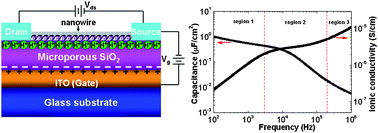Low-voltage transparent SnO2nanowire transistors gated by microporous SiO2 solid-electrolyte with improved polarization response
Abstract
Low-voltage transparent SnO2

* Corresponding authors
a
Ningbo Institute of Material Technology & Engineering, Chinese Academy of Sciences, Ningbo, People's Republic of China
E-mail:
wanqing7686@hotmail.com
b Key Laboratory for Micro-Nano Optoelectronic Devices of Ministry of Education, State Key Laboratory of Chemo/Biosensing and Chemometrics, Hunan University, Changsha, People's Republic of China
Low-voltage transparent SnO2

 Please wait while we load your content...
Something went wrong. Try again?
Please wait while we load your content...
Something went wrong. Try again?
J. Sun, H. Liu, J. Jiang, A. Lu and Q. Wan, J. Mater. Chem., 2010, 20, 8010 DOI: 10.1039/C0JM01233E
To request permission to reproduce material from this article, please go to the Copyright Clearance Center request page.
If you are an author contributing to an RSC publication, you do not need to request permission provided correct acknowledgement is given.
If you are the author of this article, you do not need to request permission to reproduce figures and diagrams provided correct acknowledgement is given. If you want to reproduce the whole article in a third-party publication (excluding your thesis/dissertation for which permission is not required) please go to the Copyright Clearance Center request page.
Read more about how to correctly acknowledge RSC content.
 Fetching data from CrossRef.
Fetching data from CrossRef.
This may take some time to load.
Loading related content
